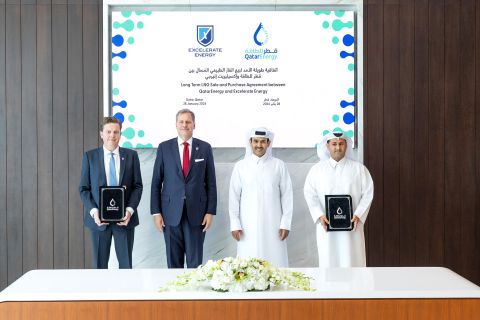
(Source: Shutterstock.com)
[Editor's note: A version of this story appears in the June 2020 edition of E&P. Subscribe to the magazine here. It was originally published June 1, 2020.]
Since the start of the pandemic and the crash in oil prices, leaders have been given much advice: stay positive and don’t panic; think long term, not just short term; and continue to innovate. But leaders need more than sermons. Most would agree they should innovate now; they are often stymied by a lack of clarity about how to innovate in a practical way, especially when people are remote and money is tight. Below are key actions that leaders can take to innovate effectively.
Address beliefs
Peter Drucker famously observed that culture eats strategy for breakfast. But what can gnaw away at the effectiveness of an organization’s culture? Poor beliefs. If culture is a set of shared beliefs that drive behavior, then leaders need to be proactive in maintaining useful beliefs and addressing potentially harmful beliefs.
For example, if employees believe that helping the company to innovate is just working themselves out of a job, then there will be little honest participation in innovation efforts. If people think they’re just a supplier and feel too little of themselves, they will have resigned themselves to being spectators while the competition innovates. If people believe they are not creative or not an engineer and, therefore, cannot innovate, this will also impair any innovation efforts.
The beliefs of the team and organization may have changed radically in the last couple of months. Due to urgency, some beliefs may have changed for the better, resulting in people being way more open to new approaches. Due to fear, some beliefs may have changed for the worse resulting in people feeling stuck and helpless.
What does the team likely believe today? Take steps to support the positive beliefs and address the negative beliefs.
Insist on synergy
Many key teams work well together, but many do not live up to their potential to innovate well together. This may due to team barriers like being separated by distance, team culture, educational differences or even incentive structures. Sometimes it is because leaders did not push the teams to innovate together effectively.
For many companies, engineering and field operations (i.e., “books and boots”) will likely have high-synergistic innovation potential. Engineering has lots of specialized knowledge, and field operation leaders have practical insight on where that knowledge could be best applied.
Leaders need to identify those groups (and there may be more than two) with high-synergistic innovation potential. They need to ensure they are organized to work together with an innovation process and within an innovation cycle and not let any barriers get in the way.
Create high-touch, high-tech innovation environments
High-touch innovation environments are characterized by an engaged network of teams and leaders working together on ideas and bringing them to fruition. High-tech innovation environments are characterized by robust information systems that help aggregate and organize innovative ideas and facilitate networks of innovators across the organization.
The most innovative companies have both high-touch and high-tech environments. An innovation environment that is strong in tech but low in touch results in glorified suggestion boxes. High-touch innovation with low-tech systems results in teams acting like an old-fashioned bucket brigade moving ideas down the line with too much effort and little opportunity for synergy with other parts of the organization.
Where is the organization in terms of tech and touch? Perhaps it has an automated system that is simply a repository for ideas that get celebrated but never go anywhere. Maybe there are pockets of great innovation within the organization, but the lack of a robust system has hampered visibility and connection. Addressing both sides of the equation will create a great leap forward in impact.
Train leaders
Leading innovation and solving problems are different skill sets, and leaders need to be able to do both.
Solving problems gets us back to a baseline. Innovating gets us to new levels of performance that have not been attained before.
Leaders who lack the process knowledge and interpersonal skills to lead innovation can inadvertently stifle innovation. They can squash ideas. They can hijack discussions. They can also (paradoxically) be too open to perspectives and end up with a bunch of half-baked ideas that run into execution problems or never get moved to a practical state.
Leaders who are excellent at leading innovation can get the discretionary effort required out of their teams to come forward with great ideas and will see the fast adoption of new processes and activities to raise the bar. Leaders who are poor at this will fumble away great ideas and promulgate environments in which people are unlikely to be interested in giving their ideas or receive the support to get these ideas out to their boss and the team. Even worse, poor innovation leaders may also drive away those innovative employees who have great ideas but who see little hope in getting their ideas heard.
Issue strategic challenges
All improvements are welcome, but not all improvements are strategic. Options to address those challenges should come from broad sections of the organization. A challenge may be related to specific operational processes (e.g., attaining a 30% increase in equipment uptime). Recruiting with more diversity is a people challenge. Reducing flaring by a certain percentage is a challenge related to the environmental, social and governance topic.
Challenges can start an innovation cycle. Staying focused on strategic areas will ensure outcomes that are high value and pragmatic.
Now is the time to get even more innovative. It will take leaders with the right thinking, using the very best tools and people to get it done. Leaders need to encourage their organizations to engage and apply their innovation muscle, and it can be done practically.
Recommended Reading
Excelerate Energy, Qatar Sign 15-year LNG Agreement
2024-01-29 - Excelerate agreed to purchase up to 1 million tonnes per anumm of LNG in Bangladesh from QatarEnergy.
UK’s Union Jack Oil to Expand into the Permian
2024-01-29 - In addition to its three mineral royalty acquisitions in the Permian, Union Jack Oil is also looking to expand into Oklahoma via joint ventures with Reach Oil & Gas Inc.
Eni, Vår Energi Wrap Up Acquisition of Neptune Energy Assets
2024-01-31 - Neptune retains its German operations, Vår takes over the Norwegian portfolio and Eni scoops up the rest of the assets under the $4.9 billion deal.
NOG Closes Utica Shale, Delaware Basin Acquisitions
2024-02-05 - Northern Oil and Gas’ Utica deal marks the entry of the non-op E&P in the shale play while it’s Delaware Basin acquisition extends its footprint in the Permian.
California Resources Corp., Aera Energy to Combine in $2.1B Merger
2024-02-07 - The announced combination between California Resources and Aera Energy comes one year after Exxon and Shell closed the sale of Aera to a German asset manager for $4 billion.





